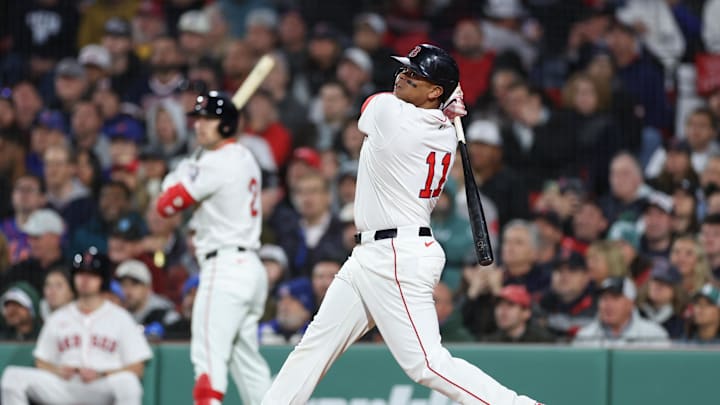Rafael Devers was on the wish list for many New York Mets fans even if he hasn’t represented himself as the greatest ambassador to the word teammate. Traded on Sunday, June 15 to the San Francisco Giants, the deal was a stunner and one that might actually affect the Mets in a few different ways.
1) The Red Sox suddenly have a lot of money available
Boston has been timid about signing any long term contracts with players. The Devers extension was an ordeal itself. The Red Sox and Mets operate in similar ways and were regular trade partners in 2024 and even before the season began. Surely, with Devers now gone, the Red Sox will have some sense of a desire to replace him in some way or another.
It might not be immediate. Although the Red Sox are playing average baseball this year, we cannot yet count them out of the postseason. Expanded playoffs gives hope to anyone willing to make that extra push at the trade deadline. The bigger ripple effect for the Mets will come in the offseason.
The Red Sox should be right there among the suitors for top free agents. Does this mean retaining Alex Bregman? Even bigger would be their ability to sign Kyle Tucker. Although the Mets aren’t an ideal match for him thanks to their success at signing Juan Soto, teams who miss out on Tucker will now have the ability to stronghold the Mets for other players. Hypothetically, if Tucker leaves the Chicago Cubs for the Red Sox we’d have to believe the Northsiders would want to do something about it.
2) Did Pete Alonso just gain another free agent destination?
Devers going to the Giants might make them less likely to pursue Pete Alonso in free agency. What about the Red Sox? First base has been a problematic position for them and not just because of the injury to Triston Casas. A figurative destination for Alonso last offseason but not a truly rumored place for him to end up, the extra payroll wiggle room can change this.
The more competition there is for Alonso, the worse off the Mets will be at retaining him. After all, one of the biggest reasons they were able to keep him was because so few teams got in on the bidding.
3) Pressure to not wait just landed at David Stearns’ feet
June 15 trades used to be common because that was the trade deadline. Now, when a player is traded on June 15, it’s usually a smaller level. This blockbuster coincidentally fell on the anniversary of the Tom Seaver, Keith Hernandez, and Donn Clendenon deals.
Impatient Mets fans, particularly after getting swept at home, will throw a little added pressure at the feet of David Stearns. He hasn’t shown he’ll dance when his toes get shot at. Stearns is flexible yet never reactionary.
However, even if Stearns isn’t listening to the fans, it is a wake-up call to at least take stock of where the rest of the league is. More trigger-happy executives may pursue a large trade to combat the Devers move. You can’t fall asleep at the wheel when everyone else is caffeinated and ready to drive. There isn’t any urgency or, quite frankly, a clear need to rush anything. But with a month and a half left to go before the trade deadline, the Devers trade has accelerated the summer rush even just a mile more.
